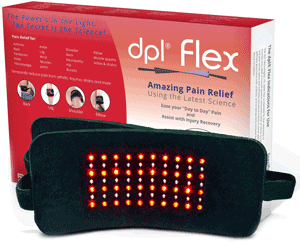Here’s an ingredient the health-food nuts are raving about, and this time those hemp-wearing hippies are actually right. Using coconut oil for acne, as you’re about to discover, could be one of those “natural” solutions for acne which really works.
Now, I’ll admit to being sceptical at first, because I’m sceptical about almost everything. I consider it one of my finer qualities.
Doubly sceptical in fact because of my previous experience with flax oil, or flax seed oil, or whatever it was called. In short, I went to a “naturopath” – childishly thinking that was some kind of professional title – and was “prescribed” flax seed oil.
That evening, three teaspoons in, and the ensuing colonic nightmare honestly made me wish I had never been born.
One night with less than 60 minutes sleep, the result of approximately nine trips to the bathroom to void the entire contents of my lower digestive tract, was enough for this deadly flax seed oil to leave me a quivering shadow of my former self come sunrise.
Oh, and my acne got much worse for about a week.
Needless to say, this episode simultaneously put me off both natural oils and naturopathic treatments in general for a very long time.
But since then my view on natural oils has been improved by jojoba oil (which is actually a liquid wax, rather than an oil per se). I certainly don’t eat it, but to this day I still use a couple of drops on my fingertip to unblock congested pores.
So, despite my natural cynicism, I was willing to give coconut oil a fair trial and I’m glad that I did.
Here’s why.
Firstly, just what is coconut oil?
For the uninitiated, coconut oil is an oil produced from coconuts.
At room temperature it is white, slightly flaky and solid. Heat it a little – such as by putting some in your mouth – and it turns to a clear oily liquid.
Unlike many other plant oils, it has a very high saturated fat content – a staggering 91%. For comparison, olive oil is 14% sat fat and sunflower oil is 10%. Flax seed oil (shudder) is 7.5%.
This high saturated fat content is important because it means that coconut oil is very slow to spoil. The oxidization of fats makes them rancid, and the more unsaturated or poly-unsaturated fat there is in a food, the faster it will react with oxygen and go off.
Rancid oils are highly, highly reactive and promote a cascade of inflammation in the body when eaten, putting the immune system on high alert – and this quickly leads to inflamed acne.
With the benefit of hindsight, I can tell you that this is why my acne got so much worse after the toxic flax seed oil – it has a high poly-unsaturated fat content, the most reactive and inflammatory of all fatty acids.
Coconut oil, on the other hand, is very stable and unreactive, meaning that all the good compounds in it can work their magic without the oily components wreaking inflammatory havoc on your skin.
And just what are these good compounds?
Coconut oil contains:
- Caprylic acid
- Lauric acid
- Myristic acid
- Vitamin E
- Trace amounts of vitamin K and iron
Which leads me neatly on to the first way you can use coconut oil for acne…
Eat it
The first delicious way in which you can use coconut oil for acne is to eat it.
The benefits of eating coconut oil come mainly from the three acids – caprylic, lauric and myristic.
As well as providing an excellent energy source for both the body and the brain, these acids have fantastic antimicrobial properties and are active against many of the bad bacteria which live in the gut.
They are also potent antifungals and coconut oil is therefore a mainstay in the “war on Candida”, the yeast which is currently blamed for every ailment of mankind.
Personally I’m not sure on the whole candida thing, but enough people tell me it’s real (and that coconut oil and candida diets work) for me to keep an open mind.
Personally, because I like the taste of coconut, I just stick three spoonfuls a day straight into my mouth, one with each meal (my first one with a cup of hot lemon water or green tea, or occasionally stirred into a cup of coffee), since I don’t eat breakfast.
It melts quite quickly, and to the disgust of my long-suffering girlfriend I then proceed to swish the oil around my mouth for a couple of minutes like a mouthwash. The antimicrobial properties make this a great natural way of keeping your teeth and gums healthy.
Alternatively, you can fry with coconut oil because it’s very resistant to heat. Some people also spread coconut oil on toast or crumpets.
Either way, getting three or four tablespoons a day into you will help to rebalance your gut bacteria and help keep inflammation down.
You may have heard that the high saturated fat content is bad for your health, but thankfully those of you who have already experienced the wondrous benefits of the ketogenic diet for acne will know that this is complete bunk.
The next four ways of using coconut oil for acne involve topically applying it.
Putting coconut oil on your skin
While it may sound counter-intuitive to apply an oil to your already-too-oily skin, just like with jojoba oil slathering your skin with coconut oil can do four marvellous things for your complexion:
- First and foremost, coconut oil is an excellent moisturizer.
Moisturizers work in one of two ways – either by adding moisture to your skin, or preventing moisture from leaving your skin.
Generally speaking, skin gets dry and cracked when moisture evaporates from between your skin cells too quickly.
Sebum, our skin’s home-made moisturizer, works by creating a barrier layer between the skin cells and the air. Since oil and water don’t mix, the water becomes “trapped” in your skin and it doesn’t dry out.
Coconut oil works in the same way – it’s an oil comprising saturated fatty acids, and won’t mix with water.
Applying a very thin layer of coconut oil keeps your skin supple and reduces dryness and cracking – meaning your skin needs to produce less of its own sebum in an attempt to restore the balance.
For more on this read about the acid mantle layer and the Caveman Regimen for acne
- Coconut oil is a strong, natural antibacterial
The lauric acid present in coconut oil is a potent antibacterial – proven to work against the acne-causing bacteria P. acnes.
A scientific study published in 2009 (Antimicrobial property of lauric acid against Propionibacterium acnes: its therapeutic potential for inflammatory acne vulgaris) rigorously tested lauric acid in both the petri dish and in living animal subjects.
Their conclusion: lauric acid is FIFTEEN TIMES as effective as benzoyl peroxide against P. acnes.
Lauric acid, when applied topically to mouse ears, also significantly decreased the number of P. acnes bacteria without any observed damage to skin cells themselves.
Unlike benzoyl peroxide, I might add.
- Coconut oil has anti-inflammatory properties
Inflammation is the precursor to the acne formation process – the first step.
Inflammation results in swelling of the cells surrounding the pore duct, partially closing the pore and making it much more likely to get blocked by sebum and dead skin cells.
This inflammation can come from about a million different sources, which is why acne is so tricky to cure – it can be hormones like DHT, it could be a food allergy, it could be stress, poor sleep, gut problems, the list goes on and on and on.
But if you can lower the level of inflammation in the skin itself, you can prevent acne from forming by thwarting that first step using anti-inflammatories.
Coconut oil contains several compounds which act as inflammation reducers, chief among which is ferulic acid (a type of phenol, plant substances which are naturally anti-inflammatory).
This means whether you eat it or whether you apply it directly to your skin, it can help to lower underlying inflammation and therefore reduce both redness and breakouts.
Note that a small minority of people have reported that coconut oil actually gave them acne, and it may potentially have comedogenic (pore-blocking) properties – but these reports are uncommon and massively outweighed by the potential benefits so it’s still worth trying it for yourself. What have you got to lose?!
- Coconut oil even works as a sunscreen!
As if this stuff could not get any more miraculous – it can also block the sun’s harmful UVA and UVB rays in the same way as sunscreen.
While it’s important to let some direct sunlight onto your face when you can (say, for twenty minutes a day) to ensure you’re getting enough vitamin D, letting yourself get sunburnt is a very bad idea for acne-prone skin.
The irritation and oxidative damage to sebum are both highly inflammatory and can lead to acne breakouts up to two weeks from when the sunburn occurred.
Granted, it’s not as strong as actual sunblock and it definitely shouldn’t be used as a replacement – according to this scientific study it blocks around 20% of radiation and is therefore approximately equal to SPF 7 sunscreen.
Still, every little helps!
How to choose the right coconut oil for your skin
As you might expect, not all coconut oil is created equal. So what should you look for?
The words you want to look for on the label are “extra virgin”.
This means the oil is unrefined, i.e. not altered by chemicals or heat during the manufacturing process. In the same way that refined sugar is worse for you than natural sugar, so refined oil is not as good for you as natural oil.
You can be confident that an extra virgin oil is of better quality because there are strict standards the manufacturing process has to meet.
One way of checking the purity of your coconut oil is to warm it up.
Put a tablespoon in a pan, heat it very gently, and then pour the resulting liquid into a bowl. If it’s perfectly clear you know it’s top quality. Poorer quality coconut oil will tend to have a yellow, beige or brownish tinge to it, and that’s a result of impurities which have leaked in during the extraction process. And you don’t want to be eating impurities, or putting them onto your skin, now, do you?
One brand of coconut oil which exceeds expectations is Island Fresh – it’s raw, organic, unrefined, extra virgin coconut oil and it’s a best-seller on Amazon.com for a reason, mainly the taste!
I buy Island Fresh Coconut Oil because it tastes of nothing but coconut – some coconut oils taste a little “nutty” and I eat enough nuts every day as it is (stop sniggering at the back there).
——————–
So if you haven’t already, why not try using coconut oil for acne. It offers four simultaneous benefits – as a gut-healer, a moisturizer, an antibacterial cream and an anti-inflammatory. And it tastes pretty good, as long as you like coconut.
Just whatever you do, DON’T get it mixed up with flax seed oil…


